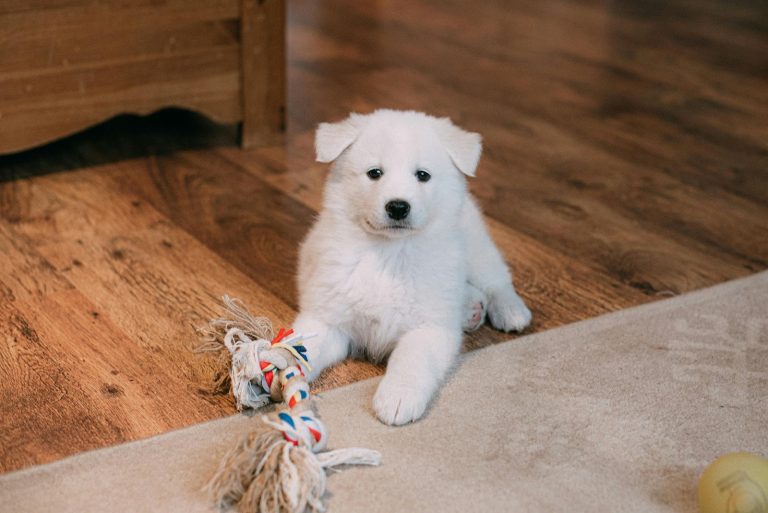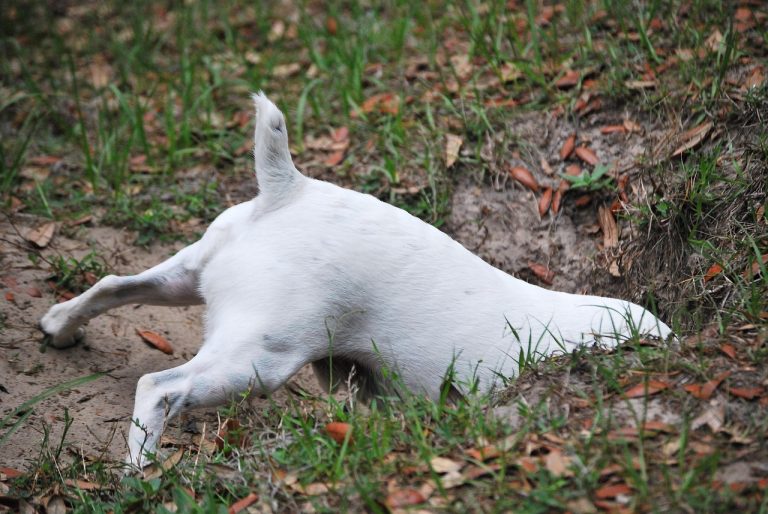Games for Senior Dogs: 7 Fun Activities to Keep Your Older Dog Active
Discover the best games for senior dogs to keep your older pup active and happy. Find out 7 fun ways to engage and entertain your senior dog.
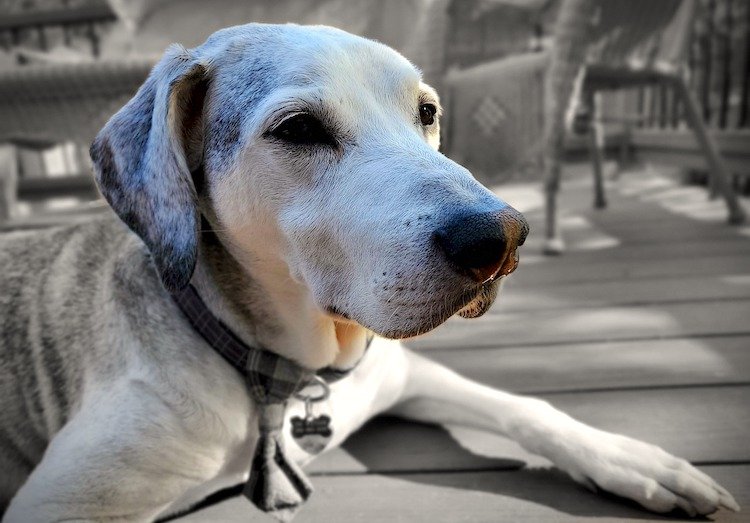
- Adjusting Activities for Senior Dogs: Keeping Older Pets Happy and Active
- 7 Games for Senior Dogs
- Round Robin: An Engaging Game for Senior Dogs
- Finder’s Keepers: A Fun Game for Senior Dogs
- Swimming: A Low-Impact Game for Senior Dogs
- Puzzle Toys: Mental Stimulation for Senior Dogs
- Fetch: A Modified Game for Senior Dogs
- Agility: A Fun and Stimulating Game for Senior Dogs
- Ante Up: A Mental Challenge for Senior Dogs
- Final Thoughts on Games for Senior Dogs
- References

Don’t leave your pet’s safety to chance
Sign up for Petful recall alerts today.

Adjusting Activities for Senior Dogs: Keeping Older Pets Happy and Active
It can be hard to watch an older pet slow down and become more limited in their activities. However, it’s important to find suitable games for senior dogs to keep them engaged and happy.
- Example: At 11 years old, my Border Collie, Mack, still loved to go hiking with us. Although his days of backpacking were behind him, he really enjoyed a good day hike.
- On the trail, you would have thought he was a 3-year-old again.
- He raced from the front to the back of the group over and over to ensure we all stayed together.
- He dutifully led us down the trail, sniffing the way home with a goofy grin for most of the hike, delighted to be with us in the woods.
It wasn’t until that evening that reality hit, and everyone recalled his age again. With a bit of arthritis and a pin in his leg from an old injury, he was often sore the evening after a hike and needed to be encouraged to rest the next day.
For more tips on keeping your older pet active and engaged, check out this guide on adopting an older pet.
Incorporating appropriate games for senior dogs can help them maintain a good quality of life, ensuring they stay happy and active despite their age.
Games for Senior Dogs: Benefits and Considerations
Even though our pups age, they still need fun and exercise in their lives. They may not be able to do flips in the air catching frisbees or soar over agility jumps, but with the right activities, senior dogs can still enjoy life.
When playing with an older dog, consider the following:
- Fragile bones: Your dog’s bones might be more fragile, making them prone to injury.
- Lower energy levels: Their energy level will probably be lower, requiring forms of exercise that fit that need.
- Weaker muscles: Their muscles will probably be weaker, which also means your dog could be less coordinated.
- Diminishing eyesight: Their eyesight might be diminishing, making visual games like fetch harder.
- Nerve issues or arthritis: They may have nerve issues or arthritis that cause pain with too much movement.
- Diminishing hearing: Your dog’s hearing could be diminishing.
- Decreasing mental capacity: Their mental capacity could be decreasing.
- Painful joints: Their joints might be painful or prone to injury due to hip dysplasia or a loss of cartilage.
- Sensitive digestive system: Their digestive system may be more sensitive, or they may require a certain diet or calorie amount.
Each dog will be a little different. Yours might have excellent hearing and eyesight still but could have hip dysplasia or spinal problems.
Knowing your dog’s health status is crucial to deciding which games for senior dogs best fit their needs and interests.
7 Games for Senior Dogs
Although your dog may need extra accommodations when you’re choosing or modifying a game, there are lots of options. Here are 7 games for senior dogs that are already great but can easily be modified.
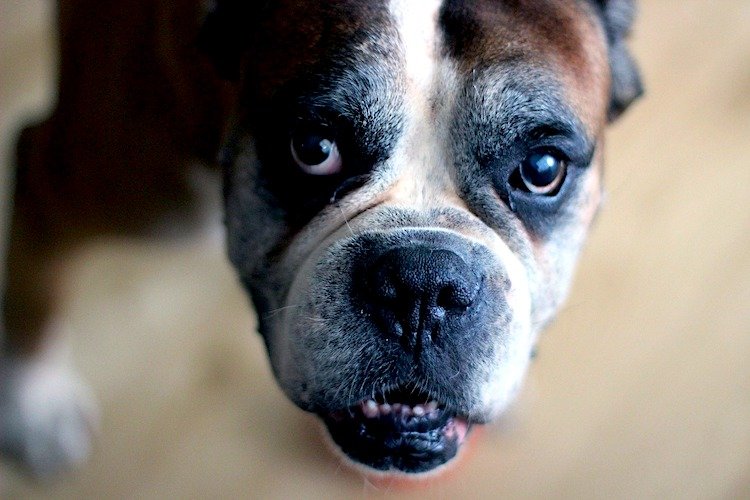
Round Robin: An Engaging Game for Senior Dogs
Round Robin is a wonderful game for senior dogs who are food- or people-motivated. It involves 2 or more people with treats calling the dog back and forth between them and giving a treat when the dog arrives.
- Modifications:
- Make it easier by hiding in more visible locations or simply standing in the open.
- Make it less strenuous by keeping the area smaller, so there is less ground for your dog to cover.
- Stay health-conscious by using your dog’s meal kibble or one-ingredient treats like freeze-dried liver or fresh chicken as a reward.
Considerations:
- Energy level: Set the distance and pace of the game according to your dog’s energy level.
- Digestive system: Choose rewards that their digestive system can handle.
- Vision: Help your dog compensate for lost vision by using continuous sound to help them locate you and by staying out in the open.
- Hearing: Help them compensate for lost hearing by using hand signals, leading them to each person at first, and staying out in the open.
- Mental capacity: Help them succeed by giving hints and leading them from person to person as needed.
How to Play:
- Gather at least one other person and some food rewards.
- Choose a suitable location (e.g., small open room, large open field).
- Have the first person call your dog’s name and use a recall word like “Come” or “Here.” Use visual and auditory cues if needed.
- Reward your dog when they arrive.
- Alternate calling your dog back and forth between participants.
- To increase difficulty, change positions or hide.
- Monitor your dog’s energy and well-being, stopping if they get tired or bored.
For more detailed instructions on using hand signals, check out this guide.
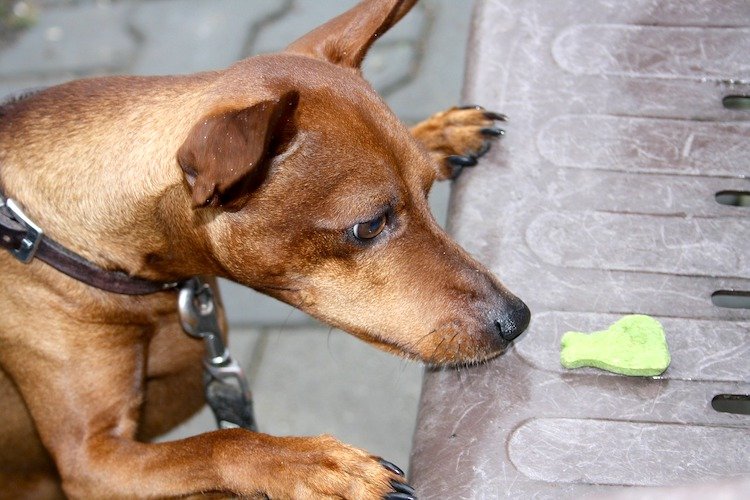
Finder’s Keepers: A Fun Game for Senior Dogs
Finder’s Keepers is a great game for senior dogs who are food-motivated and like to use their nose. It involves hiding large treats throughout your home or fenced-in yard and encouraging the dog to find them. This game is especially handy for keeping an older dog entertained while you are at work.
Considerations:
- Mental capacity: Modify the game by playing it only while you are there to help the dog find the rewards. Keep hiding spots obvious for dogs likely to forget the objective.
- Digestive system: Choose rewards that their digestive system can handle.
- Eyesight: Dogs with poor eyesight will need additional help finding the rewards. Set up the game in an open space and use especially smelly treats.
How to Play:
- Choose Treats: Select the size of treats based on your dog’s needs. Larger or smellier treats can make the game easier.
- Hide Treats: Scatter the treats in an open area or hide them behind objects like furniture or trees, based on your dog’s needs.
- Teach the Game:
- The first few times, say “Go find!” and lead your dog to each treat.
- Praise them whenever they start sniffing and looking on their own.
- Practice:
- Once your dog has learned “Go find!” and will search for rewards whenever they hear the phrase, you can set the game up before leaving home.
- Tell your dog “Go find!” right before you leave.
This game helps keep senior dogs engaged and stimulated, making it a great way to ensure they stay active and happy.

Swimming: A Low-Impact Game for Senior Dogs
Swimming is an excellent way for senior dogs to exercise without straining muscles and joints. It’s great for dogs with limited hearing, vision, or mental capacities, and many dogs simply love the water.
Considerations:
- Fear of water: Introduce dogs to water slowly and provide physical support.
- Fatigue: Use a canine lifejacket for dogs that tire easily.
- Guidance: Visually impaired or mentally limited dogs need extra hands-on help.
- Safety: Stay in shallow areas or use lifejackets to prevent accidents.
- Temperature: Ensure the water isn’t too hot or cold.
- Water quality: Avoid lake water with toxic algae and provide clean water to drink.
How to Play:
- Introduce Water: Gradually get your dog used to water with low-impact games.
- Support: Use a canine lifejacket or support their weight while they learn to swim.
- Teach Exit: Show them the exit regularly for safety.
- Fun Activities: Play fetch with floating balls or swim alongside them.
Swimming is a fun and safe way to keep senior dogs active and happy.
Puzzle Toys: Mental Stimulation for Senior Dogs
Puzzle toys are great for most dogs, but they are especially good for senior dogs who can’t do much walking or must be confined to smaller areas due to issues like incontinence or blindness. These toys provide mental stimulation and can be enjoyed while lying down.
Considerations:
- Digestive system: Choose treats that their digestive system can handle.
- Dental health: If your dog has dental issues, use soft food like liver paste or canned dog food.
- Mental capacity: Some dogs enjoy challenging toys, while others need simple ones involving only licking and chewing.
How to Play:
- Select a Toy: Choose a toy based on your dog’s determination and mental capacity. Options include:
- Simple hollow rubber toys like Classic KONG
- Puzzle toys from Outward Hound
- Treat-dispensing toys like KONG Wobbler
- Automatic treat dispensers such as Pet Tutor or AutoTrainer
- Add Treats: Fill the toy with treats suitable for your dog’s digestive and dental needs.
- Encourage Play: Show your dog the food in the toy and encourage them to get it out. Assist if needed.
- Practice: Use the toy while you are home until your dog can play with it independently.
- Regular Use: Give the toy while you are home or before leaving to keep your dog entertained.
To manage weight gain, you can use meal kibble or canned food as the toy stuffing and adjust their daily calorie intake accordingly.

Fetch: A Modified Game for Senior Dogs
Fetch is a favorite among many dogs. It’s also a game that many people think they must stop because their dog’s coordination, safety, and energy level become concerns. Thankfully, there are ways to modify this game and make it an option again for many older dogs.
Considerations:
- Energy level: Set the distance and pace of the game according to your dog’s needs. Rolling the ball along the ground and selecting balls with rubber nubs or octagonal shapes can slow down the speed.
- Vision: Help them compensate for lost vision by using balls that make noise, include lights, or have a bright color such as yellow or blue. Add scent to the ball and roll it toward your dog instead of away from them.
- Mental capacity: Give hints and lead them to the ball as needed. Use a long leash for short-distance retrievals to help guide the dog back to you.
- Joints, muscles, nerves, and bones: Keep the game low-impact by rolling the ball to your dog. Avoid encouraging jumping or sudden turns.
How to Play:
- Choose the correct ball for your dog’s needs.
- Select a suitable area: Go to an open, flat area with good traction, like a grassy backyard.
- Modify the throw: Instead of throwing the ball, have your dog go away from you first, then roll the ball toward them.
- Control the speed: Roll the ball straight and at a lower speed to avoid bouncing and sudden turns.
- Use a leash if needed: For dogs that need help bringing the ball back, use a padded back clip harness and a long training leash. Gently encourage them to return.
- Encourage dropping the ball: Show them another ball to get them to drop the one they are holding, then throw the second ball.
By making these adjustments, fetch can be a fun and safe game for senior dogs, helping them stay active and engaged.

Agility: A Fun and Stimulating Game for Senior Dogs
Agility is a sport you might not have considered for your older dog due to the risks of jumping and quick turns. However, with modifications, agility can be a great way to exercise your senior dog physically and mentally.
Considerations:
- Vision: Dogs with vision changes can participate with guidance. Use smelly rewards to lead them through the course. Completely blind dogs may find it too overwhelming.
- Energy level: Choose low-exertion obstacles like tunnels, widely spaced weave poles, or flat bridges.
- Joints, muscles, nerves, and bones: Avoid obstacles that involve jumping or balance risks. Spread weave poles far apart and keep inclines minimal.
- Mental capacity: Use treat rewards and be patient. They may need to be led each time.
- Digestive system: Choose rewards suitable for their dental, dietary, or sensitivity needs. Account for these calories in their daily food intake.
How to Play:
- Set Up Obstacles: Create age-appropriate agility obstacles or make your own.
- Choose a Reward: Find a treat or toy your dog enjoys.
- Lead Through Course: Use the reward to guide them through the course. Adjust the course if your dog is struggling.
- Keep a Steady Pace: Ensure they can keep up without getting too tired.
- Add Variety: As they improve, add new obstacles or change the layout to keep it interesting.
Agility can boost a senior dog’s confidence and keep them active and engaged.
Ante Up: A Mental Challenge for Senior Dogs
Ante Up is a great game for senior dogs who are still mentally capable but physically limited. The game involves hiding a treat under a cup and letting the dog sniff out the correct cup.
Considerations:
- Mental capacity: For dogs needing extra help, use especially smelly treats and make the air holes larger. Reduce the number of cups to 2 or 3 if needed.
- Digestive system: Choose rewards that meet your dog’s dental, dietary, or sensitivity needs. Keep their weight in check by accounting for these calories in their daily food intake.
How to Play:
- Choose Cups: Select 2–4 disposable cups and poke holes in the top of each one.
- Show the Treat: Line the cups up on a flat surface and lift the cup with the treat under it to show your dog the food.
- Encourage the Search: Place the cup back over the treat and encourage your dog to find the food by giving a command like “Where’s the food?”
- Reward Correct Choices: When they nudge the correct cup, lift it and let them eat the treat. Practice until they can nudge the correct cup without your help.
- Increase Difficulty: Once they can locate the treat, move the cup around while they watch. Gradually make the game harder by moving the cup more times or adding another cup to the game.
This game provides mental stimulation and can keep senior dogs engaged and entertained.
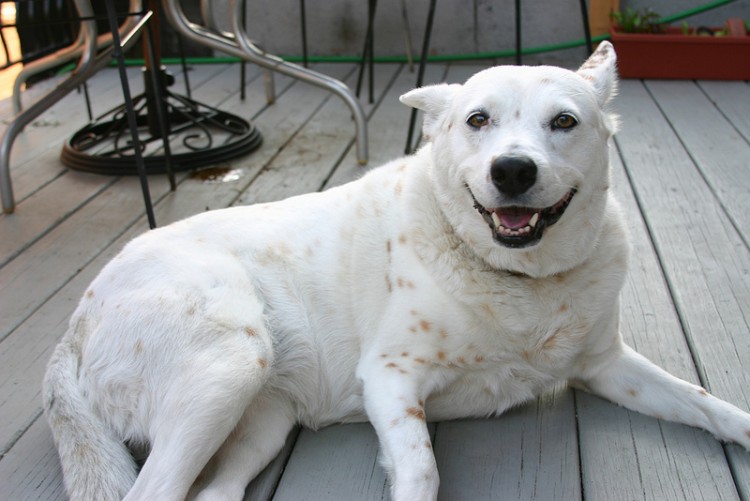
The Importance of Routine for Senior Dogs
Establishing a consistent routine is crucial for senior dogs. A predictable schedule helps reduce anxiety, provides structure, and ensures they receive regular physical and mental stimulation.
Benefits of Routine:
- Reduces Anxiety: A consistent routine helps older dogs feel secure and less anxious.
- Promotes Physical Health: Regular feeding and exercise times support digestive health and prevent obesity.
- Enhances Mental Well-being: Structured activities keep their minds engaged and reduce boredom.
Creating a Routine:
- Feeding Schedule: Feed your senior dog at the same times each day. This helps regulate their digestive system and prevents overeating.
- Exercise: Incorporate gentle exercises like short walks, stretching, or light play sessions at consistent times.
- Rest Periods: Ensure they have designated times for rest and relaxation to avoid overexertion.
- Mental Stimulation: Include activities like puzzle toys or brain games at regular intervals to keep their minds active.
- Bedtime Routine: Establish a calming bedtime routine, such as a gentle massage or a quiet time in a comfortable bed, to promote good sleep patterns.
By maintaining a steady routine, you can help your senior dog adjust to the changes that come with aging and enhance their overall quality of life.
Final Thoughts on Games for Senior Dogs
Your senior dog may be slowing down, but older dogs need physical and mental exercise, too.
Pay attention to what your dog enjoys and is capable of, and then find ways to keep them moving and using their brain in ways that fit their needs.
Looking for a way for you and your dog to get healthy together? Check out the FitBark 2, the highest-rated dog health monitor in the market. It’s a small, colorful device that you attach to your dog’s collar.
The FitBark 2 monitors activity levels, quality of sleep, distance traveled, calories burned, and overall health and behavior 24/7. Battery life is an unbelievable 6 months, so you can worry less about recharging and more about bonding with your pup. It fits dogs of any size, and it loves the water as much as your dog does!
References
- Nichole, Carrie. Brain Games for Dogs: Training, Tricks and Activities for Your Dog’s Physical and Mental Wellness. Independent. 2017.
- Alderton, David and Derek Hall. Living With an Older Dog. Hubble & Hatttie. 2011.
- Dodman, Nicholas, BVMS, and Lawrence Lindner. Good Old Dog: Expert Advice for Keeping Your Aging Dog Happy, Healthy and Comfortable. Houghton Mifflin Harcourt. 2010.
- Arford, Kaitlyn. “Best Toys and Games for Senior Dogs.” American Kennel Club. July 24, 2019.
- Benjamin, Carol Lea. “Games to Play With Your Senior Dog.” Fear Free Happy Homes. April 29, 2019. https://fearfreehappyhomes.com/games-to-play-with-your-senior-dog/.
- “How to Play with Your Elderly Dog.” The Grey Muzzle Organization. https://www.greymuzzle.org/grey-matters/wellness/how-play-your-elderly-dog.
- “Canine Brain Games: You CAN Teach an Old Dog New Tricks!” Puget Sound Pets LLC. Sept. 2, 2018. https://pugetsoundpet.com/canine-brain-games-old-dog-new-tricks/.
- “Best Toys and Games for Senior Dogs.” American Kennel Club. June 12, 2019. https://www.akc.org/expert-advice/lifestyle/toys-and-games-for-senior-dogs/.




